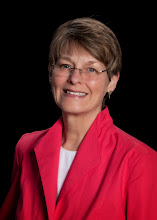Eeyore. Scrooge. Chicken Little. Oscar the Grouch. Who is your favorite spokesperson for the worst-case scenario? As much as we turn aside from these sad figures and reject their dismal views, we may also secretly suspect that they have a more accurate grasp on reality than their counterparts in Happy Camp.
In Learned Optimism, Martin Seligman encourages us to be healthier, happier, and more successful by learning and practicing optimism. We find that hope heals by activating the immune system. Confidence in our ability to meet a new challenge energizes us to do so. By offering the benefit of the doubt when we are hurt, we trigger compassion and connection.
Is there any drawback to seeing the silver lining of every cloud? Why are we skeptical of happy talk? Life sucks some of the time. Things don’t always turn out well. We should just fess up and admit it. That is true too, even in the book on optimism. Seligman ends with a discussion on the capacity to see life clearly and to choose the outlook best suited to the circumstances.
Optimism is no substitute for caution in high-risk situations with life-or-death implications. It does not allow us to drive impaired, bike without a helmet, or drop our insurance. Optimism does not excuse us from taking responsibility and making the effort needed to succeed. A belief in favorable results is effective because it motivates us to act. Pessimism saps our energy and prevents us from trying to improve.
Optimism calls for facing the facts: all the facts. If we are inclined to see only the evidence that supports gloom, it is important to look for facts that point to a contrary view. On the other hand, the facts may confirm that the challenge is great and the outlook is dim. In that case, optimism encourages us to respond creatively, to adapt our plans to respond to “what-is.”
We can see from these examples that optimism is not just positive thinking. It is not a superficial affirmation that everything will be fine. It is a hard-nosed look at what is and what might be. Faced with the evidence, it takes a hopeful look at our opportunities to influence the outcome and engages actively with pursuing that outcome.
Look at some of the challenges that surround you. What are the facts? What can you change? Where will you start? Set a modest goal, commit to action, and put on the rose-colored glasses.
Until the next time, go well.
Pam
Sunday, June 27, 2010
Equal Time for Oscar
Labels:
2010,
Issue 62: June 27
Subscribe to:
Post Comments (Atom)

No comments:
Post a Comment